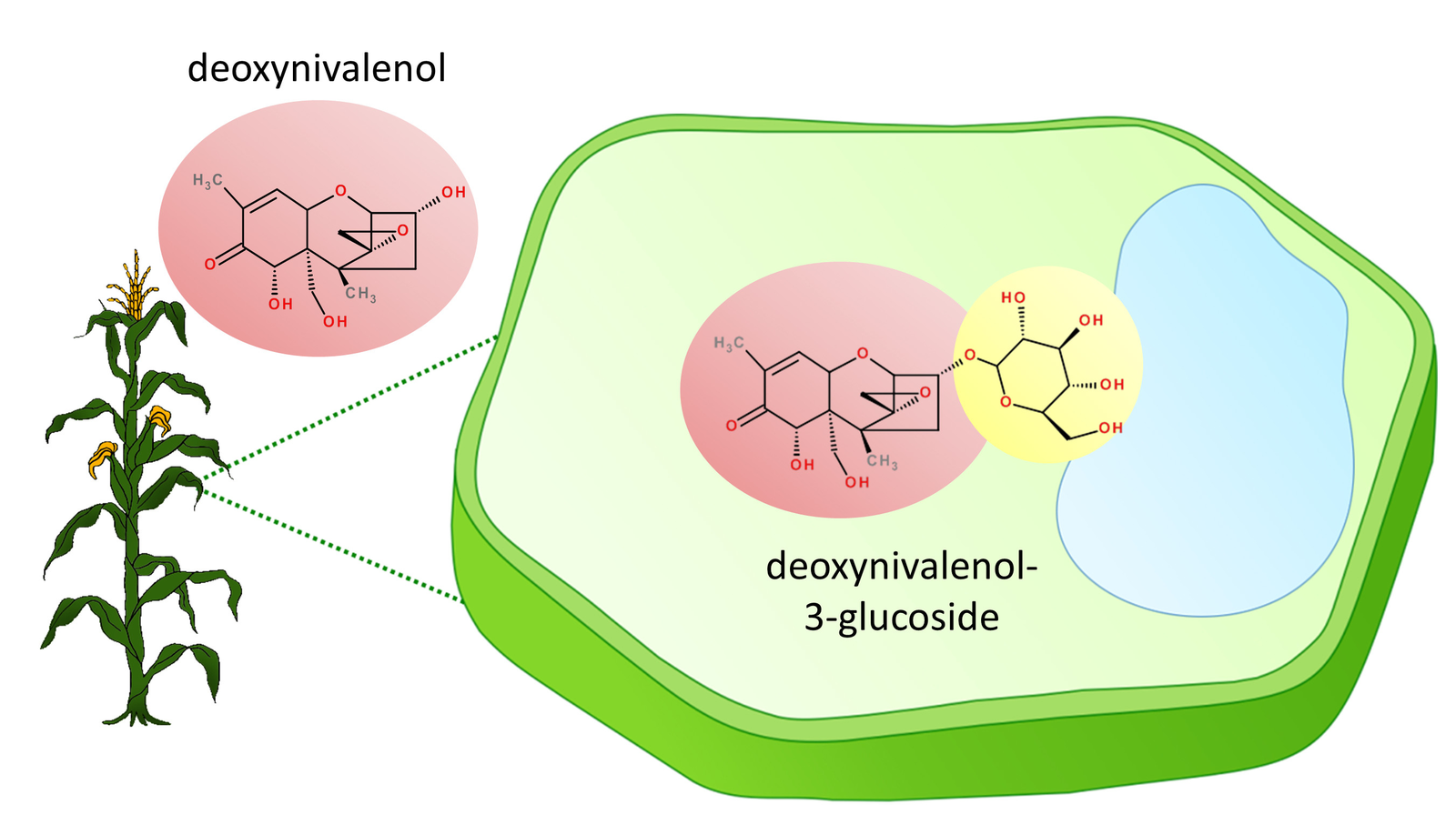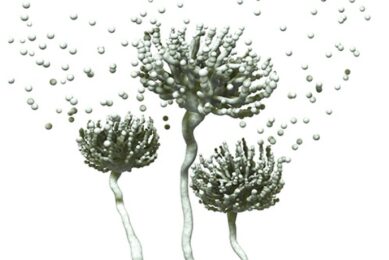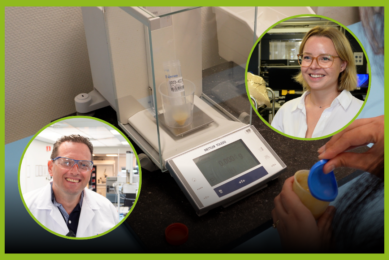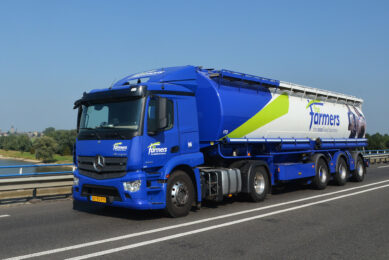Unravelling the real threats of masked mycotoxins

The real threats of masked mycotoxins are becoming clearer, as a result of better testing and more animal trials that have been done over the last years. Austrian researcher Franz Berthiller did his PhD research on these masked mycotoxins, and followed the topic ever since. All About Feed caught up with him at the recent Word Mycotoxin Forum.
|
AAF: What are masked mycotoxins?
FB: “Actually it took until 2013 until we got that clear. In 1990, it was Manfred Gareis who used the term of masked mycotoxins for the first time. Masked mycotoxins are the products that are formed when plants metabolise mycotoxins, as part of their natural defence system. These secondary metabolites are not detected by conventional mycotoxin tests and are not regulated. The metabolites are so called masked as they become toxic again as soon as they cleave off their sugar molecule in the intestine of the animal. In the early 2000s, research started to look into this topic again. An ILSI European expert group made a clear definition of what masked mycotoxins are and published this in a scientific journal. The term is now accepted throughout the global mycotoxin expert community. However, in 2014 another paper was published by another research group that talked about ‘modified mycotoxins’. Actually the latter is the umbrella term of all mycotoxins that are modified by some sort of process (for example food processing). Masked mycotoxins are, so to speak, part of this definition, but only entail the molecules that are formed by the plants.”
How toxic are these masked mycotoxins?
“A huge boost to understanding this was generated by the introduction of LC-MS testing, which gave us a tool to actually detect these masked mycotoxins. This has made a big difference. Since then, a lot of research efforts have been done regarding determining how toxic these masked mycotoxins are. To be able to draw any conclusions on this, you need to have data from animal studies to find out if the masked mycotoxins are hydrolysed (and become toxic) and where the hydrolysation takes place in the animal’s body. We did such animal studies for DON-3-glucoside in rodents and piglets and concluded that the theories from a few decades ago (that these masked mycotoxins have the same toxicity level as the actual (parent) mycotoxin) are mostly true. Also the fungal precursors of DON (3- and 15-acetyl-DON) show basically the same toxicity levels as DON itself in mammals, as they are rapidly deacetylated in the body. So besides DON, we also find considerable concentrations of those fungal precursors and of the plant metabolite DON-3-glucoside in food and feed samples. This means that the overall toxicity in food or feed can be higher than what we would expect from DON levels alone. I believe, it is just a matter of time before this knowledge will be incorporated into legislation.“
What is the link between resistant crops and masked mycotoxins?
“As explained earlier, masked mycotoxins are the products that are formed when plants metabolize mycotoxins, as part of their natural defence system. Plant breeders are exploiting this process in a quest to breed crops that can metabolise the mycotoxins even better. As DON is a virulence factor for the fungus, detoxification in planta minimises the spread of the fungus. This helps in reducing the mycotoxin load in general. The side effect though, is that the proportion of masked mycotoxins becomes more prominent. As an example: non-resistant crops produce 10 ppm of mycotoxins, of which 1 ppm is a masked mycotoxin. With resistant crops we may have only 3 ppm of mycotoxins in total, but still 1 ppm of the masked version. This means that with breeding for more resistant crops, a greater percentage of the total mycotoxin load is masked. Another element to consider is the ongoing chemical warfare between the fungus and the affected crops. While this is highly speculative, fungi might actually overcome current strategies for resistance breeding by producing different toxins. Indications are the rise of 3-acetyl-DON producing fungi in Canada and the northern Midwest region of the USA, which might partly be explained by the inability of the plant to immediately detoxify the compound to DON-3-glucoside. Another example is the recent discovery of NX-toxins in about the same area, and these are less prone to further metabolisation by crop plants.”
Can mycotoxin binders or other products solve the problem?
“There are different mycotoxin detoxification products on the market. Some are binders, and some transform the mycotoxins, rendering them less potent or even non-toxic. Binders are not really working against DON, so we need microbes or specific enzymes. The effectiveness of enzyme products against masked mycotoxins depends on whether the enzyme recognises the masked mycotoxin as a substrate. While for ZEN, some products may work, we don’t have enough data to claim that they will also work against the masked forms of ZEN. An effective strategy should reduce the total mycotoxin load (mycotoxins and their masked mycotoxins forms combined). Recent studies we performed show that the vast majority of current products on the market claiming to detoxify DON and ZEN do not work at all, not even under in vitro conditions. This is why biomarkers are so important, to know that the mycotoxin binder/deactivator actually works for the animal. Within Europe the legislation now clearly demands proof of safety and efficacy of such products (using biomarker studies), which is then critically examined by the European Food Safety Authority (EFSA). Only after a positive statement from EFSA such products can get registered and be sold as mycotoxin detoxifier in Europe. Currently only three such products are allowed in Europe, a binder to cope with aflatoxins, a bacterial strain to reduce DON and an enzyme which degrades fumonisins.”
What needs to be done to fill the knowledge gaps on masked mycotoxins?
“We need analytical standards. A prerequisite to determine masked mycotoxins in food and feed is to have access to the pure compounds. However, most of these compounds are not commercially available for routine testing labs yet, to do the research needed. Only a couple of labs, including mine, isolated or synthesised masked mycotoxins so far, which is a lot of work. I believe that in the coming years, this problem can be solved though, as there are strategies now to produce pure glucosylated toxins in high yield. But we also have to make a choice about which ones we want to study. There are many mycotoxins and hence many metabolites (masked mycotoxins). We want to focus on the main ones (such as DON and ZEN glucosides), the ones that we consider are the most relevant. To assess this, we first have to know their toxicity. Only then we can study what damage the masked mycotoxins do to the animal and eventually perform a proper risk assessment. DON for example is very bioavailable and will be taken up by the animal first. The masked version of DON can end up further down in the body, even in the colon, where the glucoside is cleaved and DON is released. But what happens there? Does the toxin cause damage at an area of the body where it would not be if not protected by the glucose group? It is important to get these types of questions answered.”
What are your thoughts on mycotoxin control in general?
“At the moment, there is a great deal of geographical variation of mycotoxin contamination. It also varies per type of raw material. People often state that 25% of the world grain is significantly contaminated with mycotoxins. I recently learned that this percentage was introduced through an interview with a mycotoxin expert years ago. The 25% figure has been circulating in the media ever since. The real situation regarding mycotoxin contamination on a global level is much more nuanced. In addition, we see a great number of samples being contaminated with multiple mycotoxins. To be able to further reduce the total mycotoxin contamination, we need more tools to help farmers and feed producers. For example: aflatoxins are still a major issue in Africa. This human food issue really needs to be fixed in the coming decades. The second priority is animal feed. The animal feed industry is growing, and the need to produce safe feed becomes even more important.”
|


 Biography
Biography First book on masked mycotoxins
First book on masked mycotoxins









